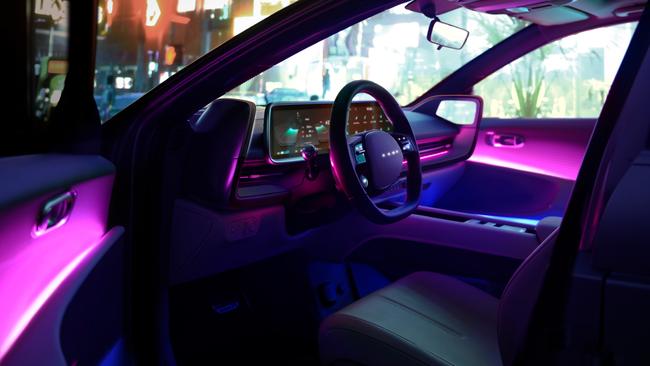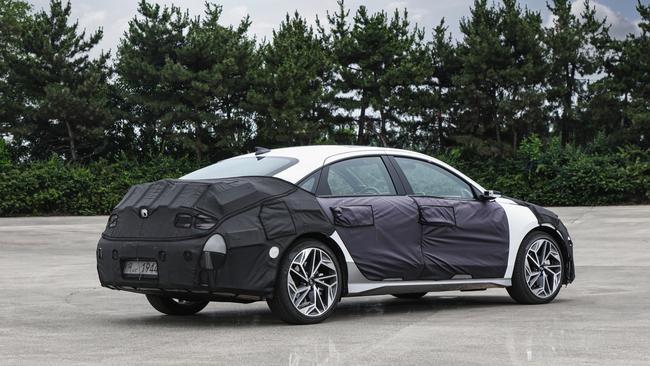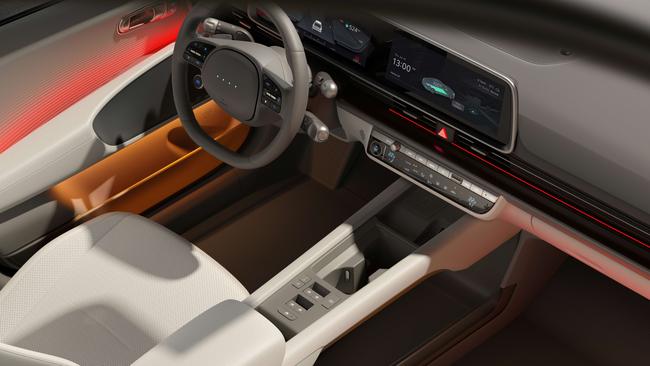First Drive: Hyundai Ioniq 6 electric car
This sliver of cutting-edge technology promises to take customers into new territory, with impressive range and eye-catching style.
Motoring News
Don't miss out on the headlines from Motoring News. Followed categories will be added to My News.
Like a stone worn smooth by the sand and sea, the Hyundai Ioniq 6 is shaped by its environment.
Promising to exceed the claimed range of any sub-$100,000 electric car, the Ioniq’s distinctive silhouette helps it slide through the air with minimal resistance – and onto shortlists for electric car customers.

The arching silhouette of its roofline helps the Ioniq claim aerodynamic efficiency that is not only the best in its class, but among the best of any car on sale. Only the lowest-drag version of Mercedes’ EQS electric car can claim to be slipperier.
Drag coefficient data is rarely the subject of bar-room bragging.

But people will boast about an electric car with more than 600 kilometres of range, particularly one that does not rely on an enormous battery to do so.
The Ioniq 6 offers the same 77.4kWh battery and choice of rear-wheel-drive or all-wheel-drive electric propulsion as the hatchback-shaped Ioniq 5.
While the boxy Ioniq 5 offers 481 kilometres of range, Hyundai expects the aerodynamic Ioniq 6 to claim 610 kilometres of range using the same test format.

It also expects the new car to be a sell-out success in Australia when it arrives next year.
While we don’t know exactly how much the car will cost, it’s likely to be a similar proposition to the Ioniq 5. That car is offered locally in relatively limited numbers priced from $69,900 plus on-road costs, suggesting the Ioniq 6 should start from less than $80,000 on the road. Range-topping versions will be closer to $90,000 drive-away.

We sampled the Ioniq 6 in camouflaged pre-production form at Hyundai’s Namyang proving ground in Seoul.
The banana-shaped roof is no less arresting in the metal, particularly when surrounded by conventional-shaped hatchbacks and SUVs at the Korean giant’s proving ground.
It’s much more familiar on the inside, where Hyundai’s design team has stayed in safer territory.

Though crude prototype plastics make it impossible to assess the quality of its interior, time in the back seat reveals that its slightly shorter wheelbase and dramatically swept roof result in less rear passenger room than the Ioniq 5.
Twin 12-inch screens curve across the dashboard in front of you, a familiar and effective if less-than-revolutionary combination for Hyundai fans. The brand took a note from Tesla’s book by keeping physical buttons to a minimum but dedicated climate controls are a victory for common sense.

Powered by twin electric motors with 239kW and 605Nm of combined power, the all-wheel-drive Ioniq 6 feels like it can match a claimed 0-100km/h time of 5.1 seconds.
Effortlessly brisk and near-silent when accelerating, the Ioniq 6 has no problem getting its power to the ground.
Special Pirelli tyres developed for the new model trade ultimate cornering grip for reduced rolling resistance necessary to maximise its long-range potential.

We didn’t have the opportunity to assess the car’s cornering characteristics but a short drive on public roads showed that the Ioniq 5 is a refined machine, with a quiet motor, smoothly managed energy harvesting and well-controlled road noise.
We can’t say whether that slippery body reduces wind roar – low-speed running in a canvas-clad prototype isn’t the right test environment – but can confirm the digital mirrors work well, even if your eyes need an extra moment to re-focus.

Accurate steering and well-modulated brakes work in its favour, and we suspect slightly tauter suspension than the comfort-focused Ioniq 5 delivers improved cornering control.
A full verdict will have to wait until we’ve had a chance to assess the car on local roads but early indications are that the Ioniq 6 backs up its intriguing looks with clever technology, giving electric car customers an impressive new option.
HYUNDAI IONIQ 6
PRICE About $90,000 drive-away
MOTOR Twin electric, 239kW and 605Nm
RANGE About 600 kilometres
0-100km/h 5.1 seconds

FAST CHARGERS
Hyundai has built a high-performance Ioniq 6 pitched at enthusiasts. Powered by the same 430kW/740Nm motors found in Kia’s EV6 GT, the machine promises three-second 0-100km/h sprints, along with sideways fun made possible by clever torque vectoring. The Ioniq 5 is first in line to receive Hyundai’s go-fast “N” treatment, but we wouldn't’ be surprised to see the sedan get special attention, too.
Originally published as First Drive: Hyundai Ioniq 6 electric car


